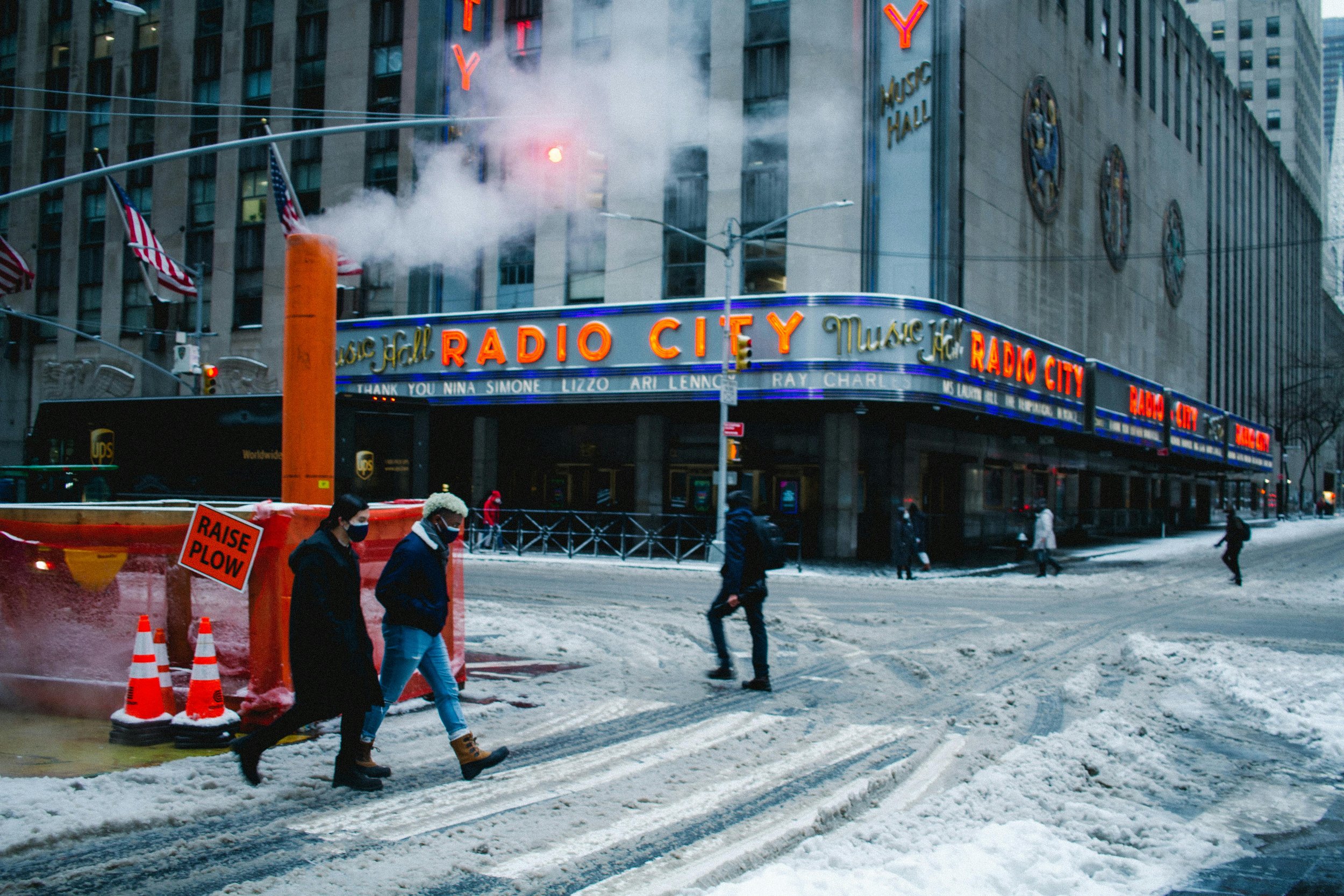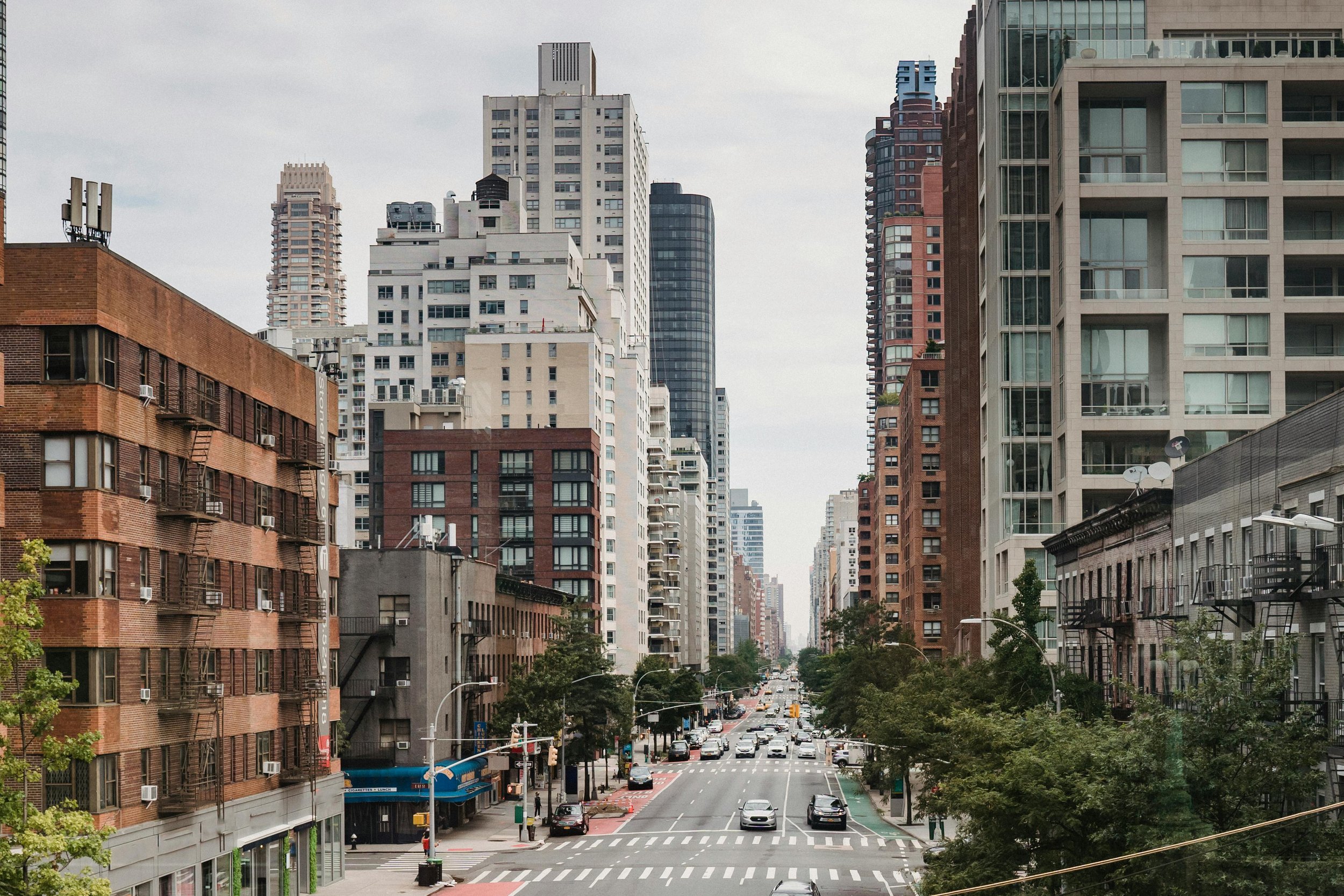New York City Weather: Year-Round Expectations
/New York City is a destination that attracts millions of travelers from all over the world each year. While the city is known for its iconic landmarks, bustling streets, and diverse culture, the weather is also a significant factor to consider before planning a trip. With a humid subtropical climate, New York City experiences four distinct seasons throughout the year, each with its own unique weather patterns.
During the summer months, the city can get hot and humid, with temperatures often reaching the mid-80s to low 90s Fahrenheit. This season is also known for occasional thunderstorms and heavy rainfall, so travelers should be prepared with appropriate clothing and footwear. In the fall, temperatures begin to cool down, and the city becomes a popular destination for tourists looking to experience the vibrant colors of the changing leaves in Central Park. Winter in New York City can be cold and snowy, with temperatures often dipping below freezing. However, the holiday season brings a festive atmosphere to the city, with popular attractions such as the Rockefeller Center Christmas Tree and ice skating at Bryant Park.
Understanding NYC's Climate
Köppen Climate Classification
New York City experiences a humid subtropical climate (Cfa) and a humid continental climate (Dfa) according to the Köppen climate classification system. The city's location on the east coast of the United States and its proximity to the Atlantic Ocean contribute to its moderate temperatures and high humidity levels.
Seasonal Variations
New York City experiences four distinct seasons, with summer temperatures ranging from 70°F to 90°F (21°C to 32°C) and winter temperatures ranging from 20°F to 40°F (-6°C to 4°C). Spring and fall are mild and pleasant, with temperatures ranging from 50°F to 70°F (10°C to 21°C).
During the summer months, the city can experience heat waves, with temperatures reaching over 90°F (32°C) for several days in a row. In the winter, the city can experience snowstorms, which can cause transportation disruptions and school closures.
Urban Heat Island Effect
New York City's urban heat island effect is caused by the city's high population density, large amounts of concrete and asphalt, and lack of green spaces. The city can be up to 7°F (4°C) warmer than surrounding rural areas due to this effect.
To combat the urban heat island effect, the city has implemented various initiatives, such as planting more trees and creating green roofs. These initiatives not only help to reduce the temperature in the city but also improve air quality and provide other environmental benefits.
Overall, New York City's climate is characterized by mild temperatures and high humidity levels, with distinct seasonal variations. The city's urban heat island effect can cause higher temperatures, but efforts are being made to combat this effect and improve the city's overall climate.
Winter in New York City
New York City experiences a cold and snowy winter season, which typically lasts from December to February. During this time, temperatures can drop below freezing, and snowfall is common.
January: The Coldest Month
January is the coldest month in New York City, with average temperatures ranging from 26°F (-3°C) to 39°F (4°C). It is essential to dress warmly when going outside during this month to avoid the risk of hypothermia or frostbite.
Snowfall and Wind Patterns
Snowfall is a common occurrence in New York City during the winter months. On average, the city receives around 25 inches of snow each winter, with most of it falling in January and February. The city's proximity to the Atlantic Ocean also means that it experiences strong winds during the winter, which can make the cold temperatures feel even colder.
Winter Events and Activities
Despite the cold weather, New York City is still bustling with events and activities during the winter months. Christmas is a particularly festive time, with many holiday markets and decorations throughout the city. The city also hosts various winter sports activities, such as ice skating in Central Park and skiing in nearby mountain resorts.
Overall, visitors to New York City during the winter should be prepared for cold temperatures and potential snowfall. However, with the right clothing and a sense of adventure, there are still plenty of fun activities to enjoy during this season.
Spring Awakening
As the chill of winter fades away, New York City comes alive with the sights and sounds of spring. From blooming flowers to outdoor events, there's plenty to look forward to during this season.
March and April Weather
In March, the city begins to warm up with temperatures ranging from the mid-40s to the mid-50s (Fahrenheit). By mid-March, Central Park starts to show signs of spring as the first flowers begin to bloom. April brings even warmer temperatures, with highs averaging in the mid-60s.
While spring in New York City is generally mild and pleasant, it's important to be prepared for occasional rain showers. March and April are known for their rainfall, with an average of 3-4 inches per month. However, these showers help to bring out the vibrant greenery and colorful flowers that make the city so beautiful during this time of year.
Springtime Events
Spring is a popular time for outdoor events in New York City. From street fairs to cultural festivals, there's something for everyone. One of the most popular events is the Macy's Flower Show, which takes place in late March and early April. This event features elaborate floral displays and is free to the public.
Another popular event is the Cherry Blossom Festival, which takes place in Central Park in late April. Visitors can enjoy the beautiful pink blossoms while participating in various cultural activities and performances.
Allergies and Precipitation
While spring is a beautiful time of year, it can also be a challenging time for allergy sufferers. Pollen counts tend to be high during this season, so it's important to take precautions such as wearing a mask or taking allergy medication.
In addition to allergies, spring can also bring occasional bouts of heavy rain. It's important to keep an eye on the weather forecast and be prepared with rain gear if necessary.
Overall, spring in New York City is a wonderful time to enjoy the outdoors and experience the city's many cultural events. With mild temperatures and blooming flowers, it's easy to see why so many people look forward to this season.
Summer Heat and Humidity
Summers in New York City are known for their high heat and humidity, making it a challenging season for many. The city experiences an average temperature of 80°F (27°C) during the summer months, with humidity levels ranging from 60-70%.
July: The Hottest Month
July is the hottest month of the year in New York City, with an average temperature of 85°F (29°C). Heat waves are common during this month, with temperatures soaring above 90°F (32°C) for several days in a row. It is important to stay hydrated and avoid prolonged exposure to the sun during this time.
Summer Rainfall and Sunshine
New York City experiences an average of 11 rainy days per month during the summer season, with a total precipitation of 4 inches (10 cm) per month. Despite the rainfall, the city also enjoys an average of 10 hours of sunshine per day, making it a great time to enjoy outdoor activities and events.
Outdoor Activities and Events
Summer in New York City is full of outdoor activities and events, including the Fourth of July fireworks display, free concerts in Central Park, and outdoor movie screenings. Many New Yorkers also head to the city's beaches and public pools to cool off from the heat.
In conclusion, summers in New York City can be challenging due to the high heat and humidity, but there are plenty of ways to enjoy the season while staying cool and hydrated. Whether it's attending outdoor events or taking a dip in the pool, there's something for everyone to enjoy during the summer months.
Autumn in the Big Apple
As the summer heat fades away, autumn brings a refreshing change to New York City. From cooler temperatures to stunning fall foliage, there's plenty to enjoy during this season in the Big Apple.
September and October Weather
Autumn weather in New York City can vary greatly from day to day. While September can still have some warm days, temperatures typically range from the mid-60s to low 70s. October brings cooler temperatures, with highs in the mid-50s to low 60s. It's important to pack layers and a jacket for the cooler evenings.
Fall Foliage and Walking Tours
New York City's parks and green spaces come alive with vibrant fall colors during October and November. Central Park is a popular spot for leaf peeping, but there are many other parks throughout the city that offer stunning views. Walking tours are a great way to explore the city's fall foliage, and many tour companies offer specialized tours during this time of year.
Halloween and Thanksgiving Events
New York City is known for its festive holiday events, and autumn is no exception. Halloween brings spooky events and parties throughout the city, including the famous Village Halloween Parade. Thanksgiving is a time for family and feasting, and there are many restaurants throughout the city that offer special Thanksgiving menus. The Macy's Thanksgiving Day Parade is also a must-see event, with larger-than-life floats and performances.
Overall, autumn in the Big Apple offers a refreshing change of pace and plenty of opportunities to enjoy the city's seasonal offerings.
Monthly Weather Breakdown
Temperature Averages
New York City experiences a humid subtropical climate, with hot summers and cold winters. The temperature in January, the coldest month, averages around 27°F (-3°C) while in July, the hottest month, it averages around 84°F (29°C). The average temperature throughout the year is around 57°F (14°C).
Precipitation Patterns
New York City receives an average of 49 inches (124 cm) of precipitation each year, with rainfall being the most common form of precipitation. The wettest month is usually May, with an average of 4.5 inches (11.4 cm) of precipitation. Snowfall is also common, especially in January and February, with an average of 25 inches (63.5 cm) of snowfall each year.
Wind Speed and Sunshine Hours
New York City experiences moderate wind speeds throughout the year, with the windiest month being March. The average wind speed is around 8 mph (13 kph). The city also receives an average of 2343 hours of sunshine each year, with the sunniest month being July.
Overall, New York City experiences a range of weather conditions throughout the year, with distinct seasons and varying levels of precipitation and temperature. Visitors and residents alike should be prepared for both hot and cold weather, as well as occasional snowfall or rain showers.
New York City Weather Extremes
Heat Waves and Cold Spells
New York City is known for its extreme weather conditions, with hot and humid summers and cold, snowy winters. During the summer months, the city experiences heat waves, with temperatures soaring above 90°F (32°C) for days on end. The heat can be oppressive, and residents and visitors alike should take precautions to stay cool and hydrated.
On the other hand, during the winter months, the city experiences cold spells, with temperatures dropping well below freezing. Snow and ice can make travel difficult, and it is important to dress warmly and stay safe when venturing outside.
Tropical Storms and Hurricanes
New York City is also vulnerable to tropical storms and hurricanes, which can bring heavy rain, strong winds, and dangerous storm surges. While these weather events are relatively rare in the city, they can cause significant damage and disruption when they do occur. Residents and visitors should stay informed about any approaching storms and follow the advice of local authorities.
Historical Weather Events
New York City has experienced a number of significant weather events throughout its history. One of the most notable was the Blizzard of 1888, which dumped more than 20 inches of snow on the city and brought transportation and communication to a standstill. In more recent years, Hurricane Sandy in 2012 caused widespread flooding and power outages throughout the city.
Overall, while New York City's weather can be extreme at times, it is important to be prepared for any eventuality and to stay informed about current and upcoming weather conditions.
Best Time to Visit NYC
New York City has a humid subtropical climate, which means that it has four distinct seasons with varying temperatures, precipitation, and daylight hours. The best time to visit New York City depends on what you're looking for, whether it's warm weather, outdoor activities, or cultural events.
Travel Planning by Season
Spring (March to May) and fall (September to November) are the best times to visit New York City. The weather is mild, and the city is less crowded than during the summer months. During the spring, visitors can enjoy the blooming cherry blossoms in Central Park and the Tribeca Film Festival. In the fall, visitors can witness the changing colors of the leaves in Central Park and attend the New York Film Festival.
Summer (June to August) is the peak tourist season in New York City. The weather is hot and humid, and the city is crowded with tourists. However, visitors can enjoy outdoor activities such as concerts in Central Park and Shakespeare in the Park. The Macy's Fourth of July Fireworks and the US Open Tennis Tournament are also popular summer events.
Winter (December to February) is the coldest season in New York City. However, visitors can enjoy the holiday decorations, ice skating in Central Park, and the New Year's Eve Ball Drop in Times Square. The winter months are also a good time to visit museums and indoor attractions.
What to Pack
Visitors to New York City should pack according to the season. During the summer months, lightweight clothing, comfortable shoes, and sunscreen are essential. In the fall and spring, visitors should pack layers, as the weather can be unpredictable. During the winter months, visitors should pack warm clothing, including a heavy coat, hat, gloves, and boots.
Cultural Events and Weather
New York City is known for its cultural events, which take place year-round. Visitors should check the weather forecast before attending outdoor events, as the weather can be unpredictable. During the summer months, thunderstorms are common, and visitors should be prepared for sudden downpours. In the winter, snowstorms can disrupt travel plans, and visitors should check for any weather-related advisories before traveling.
Overall, the best time to visit New York City depends on personal preferences and interests. Visitors should plan their trip according to the season and pack accordingly. With its wide range of cultural events and attractions, New York City has something to offer visitors year-round.
Weather Preparedness and Safety
Emergency Information
New York City experiences a range of weather conditions throughout the year, from hot and humid summers to cold and snowy winters. It's important to stay informed about weather alerts and warnings issued by the National Weather Service and local authorities. In case of an emergency, the city's Emergency Management website provides up-to-date information on evacuation zones, emergency shelters, and other resources.
Navigating NYC's Weather
When traveling around the city, it's important to be prepared for changing weather conditions. During the summer, it's recommended to carry water, wear light-colored and loose-fitting clothing, and seek shade during the hottest parts of the day. In the winter, it's important to dress in layers, wear warm and waterproof clothing, and be aware of icy sidewalks and roads.
Staying Comfortable in Extreme Conditions
Extreme weather conditions can pose safety risks, so it's important to take precautions to stay comfortable and safe. During heat waves, it's recommended to stay indoors in air-conditioned spaces, drink plenty of water, and avoid strenuous activities during the hottest parts of the day. During cold snaps, it's important to stay warm and dry, wear hats and gloves, and avoid prolonged exposure to the cold.
When traveling on the subway, it's important to be aware of the possibility of delays or service changes due to weather-related issues. During periods of low visibility, such as fog or heavy rain, it's important to take extra caution when driving or walking near the Atlantic Ocean, as visibility can be limited and conditions can be hazardous.
By staying informed and taking necessary precautions, residents and visitors can stay safe and comfortable in New York City's diverse weather conditions.









